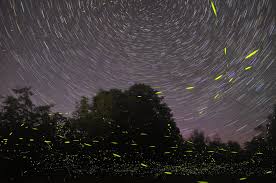M Atif Ismail
MULTAN, Jan 26 (APP):Once a mesmerizing beacon of hope in the darkness, fireflies, or “Jugnu”, are now a fading memory in the country.
These tiny lanterns, adored by children and celebrated in poetry, have been extinguished by the harsh realities of environmental degradation. Excessive pesticide use, deforestation, and light pollution have wiped out this enchanting creature from most parts of the country. Until the 1990s, fireflies thrived across villages, fields, and riverbanks. Their soft glow turned gloomy nights into magical spectacles, and their presence symbolized hope and resilience in Urdu poetry. Even great poets like Allama Iqbal immortalized the Jugnu as a metaphor for light amidst despair.
But today, the situation is bleak. Fireflies, once a common sight for curious children and a source of wonder for nature lovers, have almost disappeared from urban and rural landscapes. Dr. Ansar Naeem Ullah, an entomologist at MNS Agricultural University, Multan, explains that pesticides and artificial lighting had disrupted their habitats and life cycles. He further notes the fireflies’ larvae, which are carnivorous and vital for their reproduction, are particularly vulnerable to chemical exposure. Dr Unsar Naeem Ullah said that a student was assigned research on fireflies. “There were 2,000 species of fireflies. However, we do not know which species were part of our environment. Globally, fireflies still flicker in places like North America, Europe, Australia and Brazil, where conservation efforts maintain their habitats,” he added.
In Pakistan, however, only a few isolated pockets in the northern areas and some remote villages sporadically witness their glow. These delicate creatures undergo a fascinating life cycle known as metamorphosis. From egg to larva, pupa, and finally an adult, their lifespan spans just a few weeks. Male fireflies use their bioluminescent glow to attract mates, a trait absent in most females. This magical light results from a chemical process called bioluminescence, involving a protein that produces light without heat. Historically, fireflies held practical and aesthetic value. Tribes used them for medicinal purposes, while children captured them in jars to light up dark corners. For decades, parents affectionately called their kids “Jugnu,” inspired by the bug’s charm. Today’s children, however, remain oblivious to this wonder, said another citizen Salman Amjid. Today’s generation did not know about Jugnu, he stated. He also asked his kids whether have they seen Jugnu. However, the reply was a mix of confusion and disbelief.




